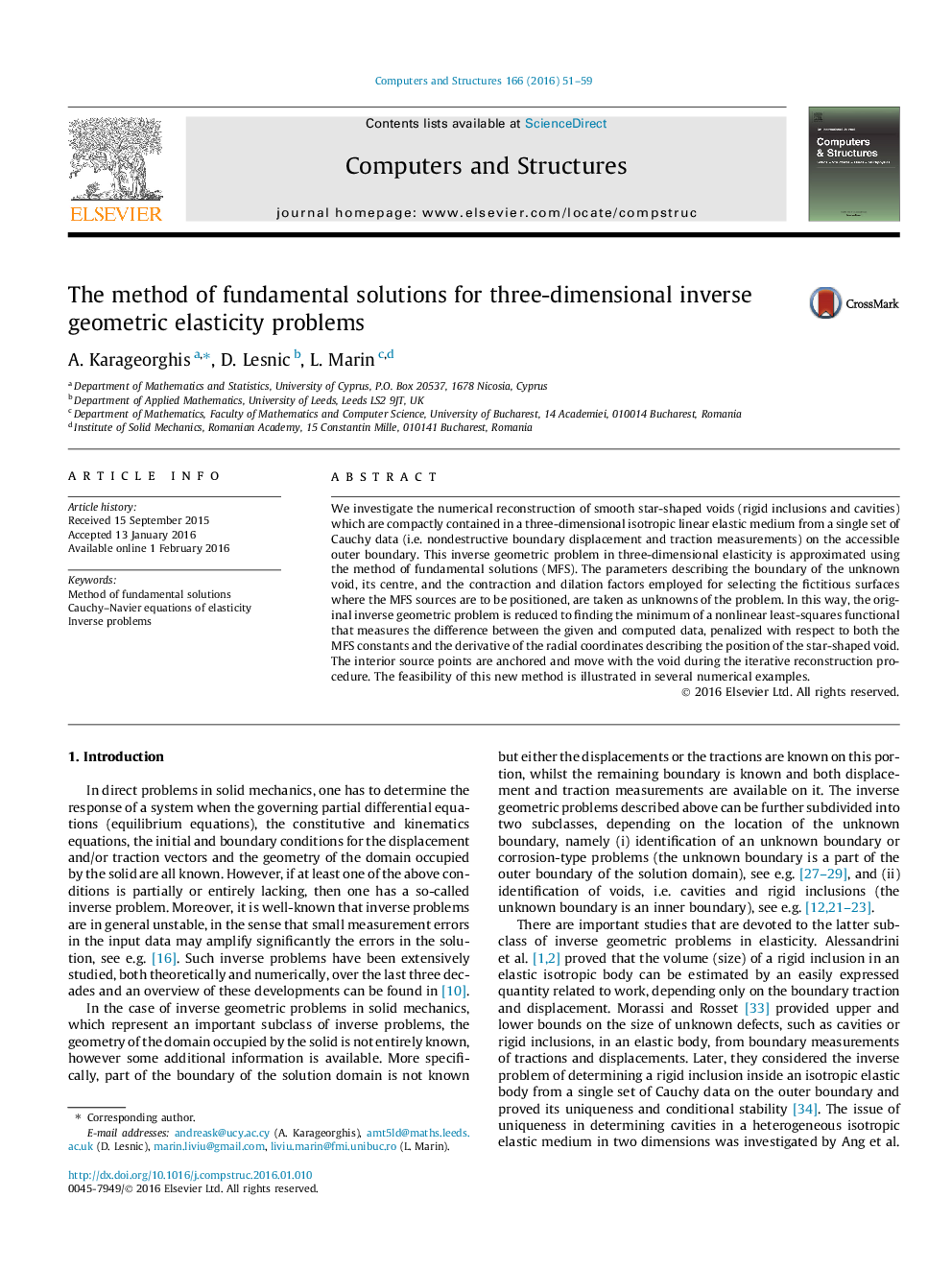| Article ID | Journal | Published Year | Pages | File Type |
|---|---|---|---|---|
| 509842 | Computers & Structures | 2016 | 9 Pages |
•First time a 3D inverse geometric problem in elasticity is considered using the MFS.•Obtain full benefits of the MFS since we are dealing with nonlinear 3D problems in complex geometries.•The method is accurate (for no noise) and stable with respect to noise added in the input data.•Accurate results are obtained for relatively few degrees of freedom.•The dynamic approach of the MFS is well-suited for such nonlinear problems.
We investigate the numerical reconstruction of smooth star-shaped voids (rigid inclusions and cavities) which are compactly contained in a three-dimensional isotropic linear elastic medium from a single set of Cauchy data (i.e. nondestructive boundary displacement and traction measurements) on the accessible outer boundary. This inverse geometric problem in three-dimensional elasticity is approximated using the method of fundamental solutions (MFS). The parameters describing the boundary of the unknown void, its centre, and the contraction and dilation factors employed for selecting the fictitious surfaces where the MFS sources are to be positioned, are taken as unknowns of the problem. In this way, the original inverse geometric problem is reduced to finding the minimum of a nonlinear least-squares functional that measures the difference between the given and computed data, penalized with respect to both the MFS constants and the derivative of the radial coordinates describing the position of the star-shaped void. The interior source points are anchored and move with the void during the iterative reconstruction procedure. The feasibility of this new method is illustrated in several numerical examples.
